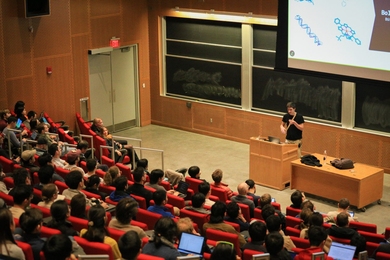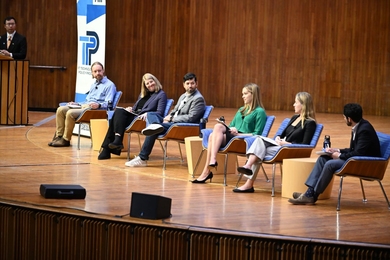MIT is the #5-ranked national university, according to the 2001 US News and World Report guidebook, "America's Best Colleges."
US News ranks MIT first in undergraduate engineering programs in schools that offer engineering PhDs, and second for undergraduate business programs, following the University of Pennsylvania.
The guidebook, which hit newsstands September 4, names Princeton as the nation's top school. Harvard and Yale are tied for second place and the California Institute of Technology is #4. Caltech was #1 last year.
In an e-mail interview with The Tech, MIT President Charles M. Vest said, "It is very good that MIT continues to be rated as one of the handful of institutions at the very top of all universities.
"However, as I have consistently stated for many years, the hair-splitting of actual rank ordering such disparate institutions is essentially meaningless. Indeed, the drop in MIT's position this year appears to be primarily because of a technical change in the way we report our research volume.
"MIT is guided by what our faculty believes to be the best curricula and institutional strategies, rather than by magazine rankings," he said.
Last year, MIT was ranked #3 after sharing the #4 ranking with Stanford University in 1998 and holding the #6 slot in 1997.
MIT is among the top schools in terms of campus racial and ethnic diversity, earning a diversity index of 0.65 (1.0 is the highest possible), partly because 30 percent of the student population is Asian American. It is also among schools with the highest graduation rates (91 percent) and highest proportion of classes with less than 20 students (70 percent).
METHOD OF RANKING
Best college rankings in the guidebook were determined by judging the academic quality of more than 1,400 schools based on a formula that relies upon objective data -- such as freshmen retention and graduation rates, student-faculty ratio and class size -- for 75 percent of the measurement. The remaining 25 percent is based on a reputational survey of university presidents, provosts and deans of admission.
Rankings for undergraduate business and engineering programs are based on ratings by deans and senior faculty of peer institutions in their disciplines. Other indicators used to capture academic quality were faculty salary; proportion of the faculty that is full time; proportion of professors holding the highest degree in their field; student selectivity; average spending per student on research, instruction and education-related services; and alumni giving rate.
A version of this article appeared in MIT Tech Talk on September 13, 2000.





